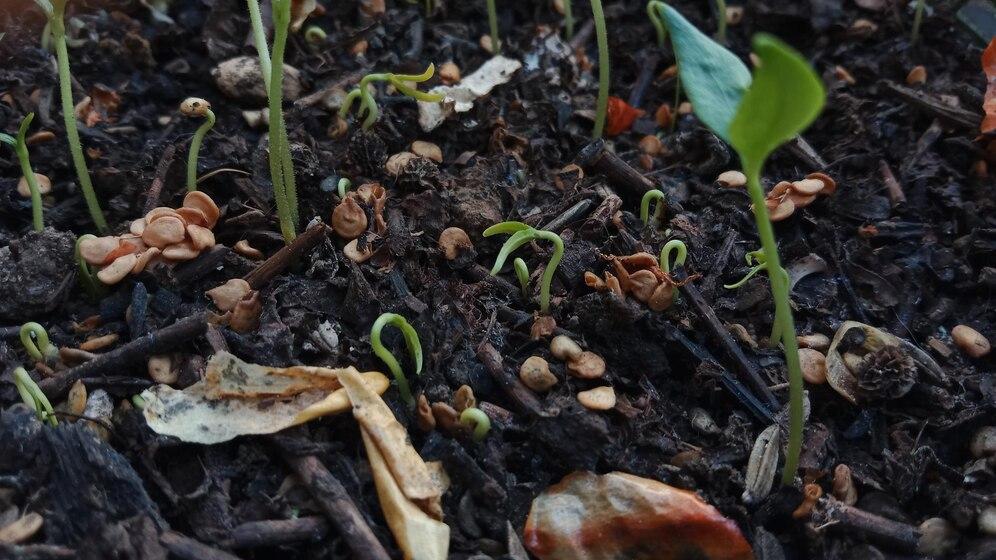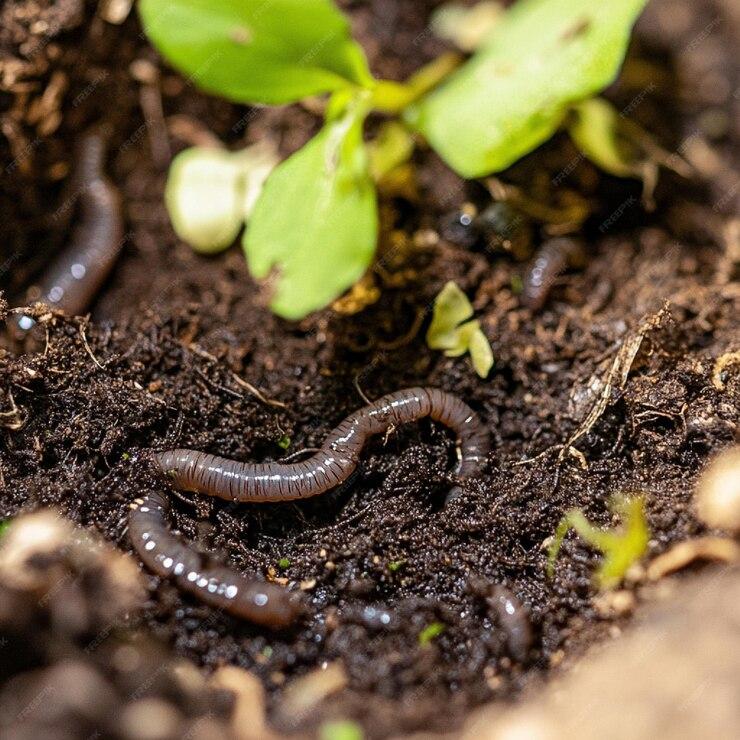



Table of Contents
- Introduction
- What is Vermicomposting?
- The Vermicomposting Process
- Benefits of Vermicomposting
- Nutritional Profile of Vermicompost
- Applications of Vermicompost
- Challenges in Vermicomposting
- Conclusion
- Faq's
Introduction
Vermicomposting is an innovative and sustainable method of composting that utilizes earthworms to break down organic waste into nutrient-rich compost known as vermicompost. This process not only helps in waste management but also enhances soil fertility, making it an essential practice in organic farming and gardening.
By employing earthworms, particularly the red wigglers (Eisenia fetida), vermicomposting transforms kitchen scraps, yard waste, and other organic materials into a valuable resource for gardeners and farmers alike.
This article delves into the intricacies of vermicomposting, exploring its benefits, processes, applications, and challenges.

What is Vermicomposting?
Vermicomposting is a biological process that leverages the natural digestive systems of earthworms to decompose organic matter. The primary species used in this process is the red wiggler worm, known for its efficiency in consuming organic waste.
 Red Wiggler Worms Are Used For Vermicomposting
Red Wiggler Worms Are Used For Vermicomposting
When these worms are introduced to a controlled environment filled with organic materials, they break down the waste through their digestive processes. As they consume food scraps and bedding materials, they excrete nutrient-rich castings, commonly referred to as vermicompost. This end product is a dark, crumbly substance that is not only rich in essential nutrients but also contains beneficial microorganisms that enhance soil health.
Vermicomposting can be done indoors or outdoors, making it accessible for urban dwellers as well as rural farmers. It serves as an effective solution for reducing household waste while simultaneously producing a high-quality organic fertilizer that can significantly improve plant growth and soil quality.
The Vermicomposting Process
Preparation of the Worm Bin:
- Choose a suitable container (plastic or wooden) with drainage holes to prevent waterlogging.
- Add bedding material such as shredded newspaper, cardboard, or coconut coir to create a comfortable habitat for worms.
Adding Organic Waste:
- Introduce kitchen scraps (fruit and vegetable peels, coffee grounds) and yard waste (grass clippings, leaves).
- Avoid adding meat, dairy products, or oily foods to prevent odors and pests.
Introducing Earthworms:
- Release red wigglers into the prepared bedding and organic waste mixture.
- Cover the bin to maintain moisture and temperature.
Maintenance:
- Regularly check moisture levels; the bedding should be damp but not soggy.
- Stir the contents occasionally to aerate the mixture and speed up decomposition.
Harvesting Vermicompost:
- After 2-6 months, when most of the original materials have been broken down, vermicompost can be harvested.
- Use methods like "dump and sort" or light exposure to encourage worms to move away from the compost.
Benefits of Vermicomposting

Vermicomposting offers a multitude of benefits that make it an attractive option for both home gardeners and commercial farmers. One of the primary advantages is its ability to produce nutrient-rich fertilizer known as vermicompost. This compost contains a balanced mix of essential nutrients like nitrogen, phosphorus, potassium, calcium, and magnesium all vital for plant growth. Additionally, vermicompost improves soil structure by enhancing aeration and drainage while increasing moisture retention capabilities.
Another significant benefit is its role in pest and disease resistance. The microbial activity present in vermicompost can help suppress certain plant diseases and deter pests naturally, reducing the need for chemical pesticides. Furthermore, vermicomposting contributes positively to environmental sustainability by reducing landfill waste through recycling organic materials that would otherwise contribute to methane emissions during decomposition in landfills.
Finally, it promotes biodiversity within soil ecosystems by introducing beneficial microorganisms that foster healthy plant growth. This holistic approach not only supports individual gardens but also contributes to broader ecological health by improving soil quality across agricultural landscapes.
Nutritional Profile of Vermicompost
The nutritional profile of vermicompost makes it an exceptional organic fertilizer that stands out among other composting methods.
Macronutrients:
- Nitrogen: Approximately 1.6%
- Phosphorus: Around 0.7%
- Potassium: About 0.8%
- Calcium: Approximately 0.5%
- Magnesium: About 0.2%
These nutrients are often more bioavailable than those found in traditional compost due to the unique microbial activity facilitated by earthworms during digestion.
In addition to these macronutrients, vermicompost also contains trace elements like iron, manganese, zinc, and copper, elements that are vital for various physiological functions in plants but are often lacking in conventional fertilizers. The presence of beneficial microorganisms in vermicompost also plays a critical role; these microbes help improve nutrient absorption by plants while enhancing soil health through increased microbial diversity.
Moreover, vermicompost acts as a slow-release fertilizer; its nutrients are released gradually over time rather than all at once, which minimizes nutrient runoff and reduces the risk of over-fertilization, common issues associated with synthetic fertilizers. This balanced nutrient profile makes vermicompost an ideal choice for gardeners looking to cultivate healthy plants sustainably.
Applications of Vermicompost
Vermicompost has a wide range of applications across various sectors due to its rich nutrient content and positive effects on soil health. In gardening, it serves as an excellent organic fertilizer that can be mixed into potting soil or applied directly around plants as a top dressing. Its ability to improve soil structure enhances root development and overall plant vigor, making it particularly beneficial for growing fruits, vegetables, herbs, and ornamental plants.
In agriculture, farmers utilize vermicompost as a natural amendment that boosts crop yield while improving soil fertility over time. Its application helps reduce dependence on chemical fertilizers, an important factor in sustainable farming practices aimed at preserving environmental health.
Landscapers also find value in using vermicompost for turfgrass management and ornamental landscaping projects; it promotes lush growth while reducing water requirements due to improved moisture retention capabilities.
Additionally, vermicomposting plays a crucial role in waste management systems by effectively treating organic waste generated from households and industries. By converting food scraps into valuable compost instead of sending them to landfills, communities can significantly reduce their carbon footprint while fostering a circular economy focused on sustainability.
Challenges in Vermicomposting
Despite its numerous benefits, vermicomposting does present some challenges that practitioners must navigate for successful implementation. One significant challenge is the time required for the composting process; depending on factors such as temperature and moisture levels, it can take anywhere from two months up to six months before high-quality vermicompost is ready for use. This longer timeframe may deter some individuals who seek quicker composting solutions.
Maintenance is another critical aspect; regular monitoring of moisture levels is essential since worms thrive in damp environments but can perish if conditions become too wet or dry. Additionally, feeding schedules must be managed carefully, overfeeding can lead to odors or attract pests like fruit flies or rodents.
Odor management can also pose challenges if food scraps are not balanced properly within the bin or if anaerobic conditions develop due to insufficient aeration. To mitigate these issues requires knowledge about proper feeding ratios and regular stirring of contents.
Finally, sourcing suitable worms may be difficult for some individuals; while red wigglers are widely available through gardening stores or online retailers, ensuring they are healthy upon introduction into a new environment is crucial for successful composting outcomes
Conclusion
Vermicomposting stands out as an effective solution for managing organic waste while enriching soil health through sustainable practices rooted in nature's processes. By harnessing the power of earthworms, particularly red wigglers,individuals can transform kitchen scraps and yard waste into high-quality fertilizers that promote plant growth without relying on synthetic chemicals.
As awareness grows about its benefits among gardeners and farmers alike,ranging from improved nutrient availability to enhanced soil structure, the popularity of vermicomposting continues to rise across various communities worldwide. Embracing this eco-friendly approach not only contributes positively toward environmental conservation efforts but also fosters healthier ecosystems capable of supporting diverse plant life sustainably over time.
By adopting vermicomposting practices today,whether at home or within larger agricultural systems, we can all play our part in creating a greener future while enjoying bountiful harvests from our gardens!
explore further
Latest from Contemporary ideas
More from Innovations
Resources
Dwello, for every home buyer, is a way to go from 'I feel' to 'I know', at no extra cost.




